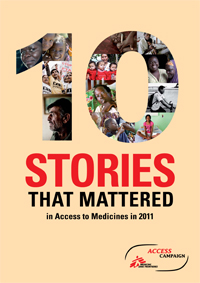Through its Access Campaign, MSF has been closely following the developments in the world of access to medicines, vaccines, and diagnostics.
2011 marks the ten-year anniversary of two events that have helped shape people’s ability in developing countries to access quality, affordable medical care.
First, the signing of the Doha Declaration, in which governments affirmed the need to prioritize health over trade: access to affordable medicines over intellectual property rights. But a decade later, the struggle to access medicines in developing countries continues.
One key fault line is India, which is home of the most quality affordable medicines used in the developing world, but which faces attacks by drug companies and wealthy countries who continue to clamp down on generic production. Other middle-income countries are increasingly finding themselves faced with escalating prices from the pharmaceutical industry. The price of vaccines is a newer source of contention, and will remain so, now that the world’s largest purchasers are openly publishing vaccine prices for the first time.
2011 is also the ten-year anniversary of the decision to create a “war chest” to fight the developing world’s biggest killer diseases: HIV/AIDS, tuberculosis, and malaria. Through the Global Fund, unprecedented levels of donor money were channeled towards saving lives. But ten years on, global health is suffering from a sudden shortfall in funding, as donor countries leave the Fund in dire financial straights.
Without renewed prioritization of health, both politically and financially, recent scientific promise and policy advances look fragile. A landmark clinical trial showed conclusively this year that HIV treatment is a form of prevention, offering a glimpse of the possibility turnoff turning the tide against AIDS—but wider scale-up of treatment will need to happen for us to realize the benefits. The numbers of people receiving quality drug-resistant TB treatment remain very low, even when a new diagnostic tool has the potential to break the vicious circle of low demand and limited supply. And a subsidy intended to improve access to better malaria treatments got off the ground this year, but has contributed to a tripling of the raw material price, raising serious questions about its effectiveness.
Of course, it’s not just about the big three diseases. Children caught up in nutritional crises are beginning to receive food aid that is better adapted to their nutritional needs, but look beyond the glare of the latest media spotlight, and the plight of millions of malnourished children remains unaddressed. Lack of prioritization by manufacturers precipitated a shortage of the main drug to treat Chagas disease, just as medical evidence and political prioritization made it seem scale-up of treatment was within reach. New guidelines to treat cryptococcal meningitis point to a better way forward, but also present an almost textbook case of the barriers to effective and affordable medicines.
These are some of the barriers to medical care that people in developing countries encounter every day. Doctors Without Borders/Médecins Sans Frontières’s (MSF) Access Campaign was created just over ten years ago in order to try, with others, to bring down some of these barriers that restricted our ability as a medical humanitarian organization to give patients the best care we can. Ten years on, with real achievements under our belt, the battle is not yet won—there is still so much to fight for.
1. Getting Ahead of the Wave of New HIV Infections to Turn the Tide on AIDS
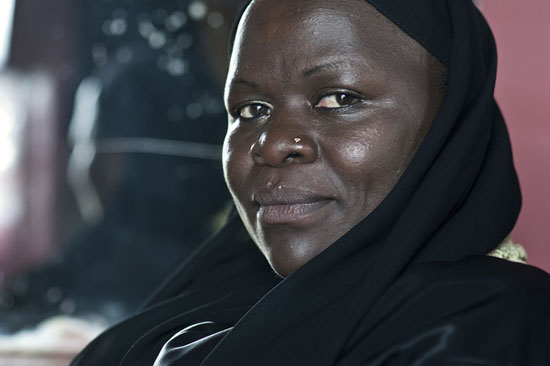
Kenya 2011 © Sven Torfinn
Siama Musine from Kibera in Kenya, started antiretroviral treatment six years ago. Now she leads a full and healthy life and is supporting her son through his education.
Three decades into the HIV/AIDS pandemic, and after 30 million deaths, landmark scientific findings this year show that providing people with HIV treatment early not only saves their lives but can reduce the risk of transmitting the virus to others by 96 percent—in effect demonstrating that early treatment of HIV is also prevention.
“There is now hope down the line. Today we know that if all those who need treatment get it, earlier, we can decrease new infections to such a point that we can push back on this epidemic. That is incredibly exciting if we get the means to do it . . . ”
—Dr. Gilles Van Cutsem, MSF Medical Coordinator, South Africa and Lesotho
The question now is therefore how to make expansion of treatment both feasible and affordable—a challenge MSF has been grappling with in its projects since beginning to treat HIV in developing countries more than ten years ago.
MSF has learned, through experience, how care can reach more people in resource-limited settings—for example by decentralizing treatment from central hospitals to health centers and to community health posts, so it is available closer to where people live; and by shifting medical tasks from doctors to nurses, and in turn to community health workers, to overcome human resource shortages.
Ensuring treatment is affordable is equally critical—competition among generic producers is what has brought prices for HIV medicines down by more than 99 percent over the last decade. But more must be done to rein in drug prices, particularly for newer medicines.
Governments committed at the UN in June to reach 15 million people with HIV treatment by 2015. The US government also committed to nearly doubling the pace over the next two years at which it enrolls people on treatment through its international AIDS treatment funding program.
If treatment is expanded to all in need by 2015, UNAIDS estimates more than 7 million deaths and 12 million new infections could be averted by 2020.
But the fact is that still only half of those in urgent need of treatment have access to it, and recent dramatic funding shortfalls put the goal of an AIDS-free future further out of reach.
Without solid financial backing to the political commitments set out this year, we will not be able to capitalize on recent scientific advances and stop the epidemic in its tracks.
Related: Getting Ahead of the Wave: Lessons for the Next Decade of the AIDS Response
2. At Last, Clarity on Prices Promises to Make Vaccines More Affordable
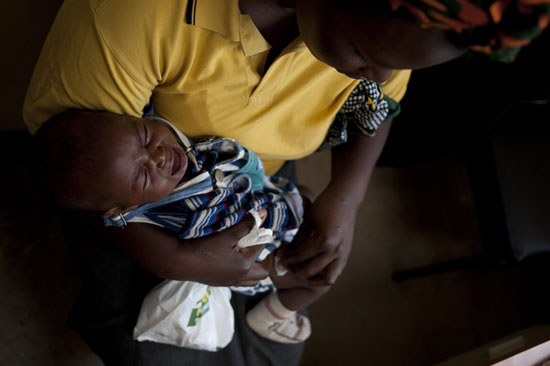
Kenya 2011 © Bruno De Cock/MSF
Earlier this year, MSF began vaccinating children in its projects in Kenya with the new pneumococcal vaccine. Many believe too high a price was paid to pharmaceutical companies for the vaccine.
“Vaccine prices need to come down so that as many children as possible in developing countries can be protected from killer diseases. For that to happen, we need make sure through price transparency, among other safeguards, that pharmaceutical companies are offering the best deal they can.”
—Daniel Berman, Deputy Director, MSF Access Campaign
The fight for more affordable vaccines for children in developing countries was boosted this year when UNICEF—for the first time—published the prices it pays for all the vaccines it buys.
This move revealed huge price disparities in what different companies are charging for similar vaccines.
For instance, the drug company Crucell is charging UNICEF nearly 40 percent more than the Serum Institute of India for its pentavalent vaccine that protects children against five diseases in one shot.
There’s been no price transparency until now over vaccine prices and purchasers have had no benchmark figures from which to negotiate the best deal. Now that the information is public, competing vaccine manufacturers are likely to drive prices down, meaning that more children can be immunized against life-threatening diseases.
More in this vein, MSF is encouraging GAVI, the world’s biggest purchaser of vaccines for developing countries, to use its huge purchasing power to get the best deal for the vaccines it buys. That has not been happening enough so far.
While it is true that prices need to be high enough to make this an attractive market for efficient, lower-cost vaccine suppliers, current prices still include too much of a mark up.
Take for example one of GAVI’s landmark schemes, the Advanced Market Commitment, negotiated with drug companies to speed up the roll out of a vaccine against pneumococcal disease. The vaccine will save many young children’s lives but GAVI could have negotiated better terms meaning that more children could have been vaccinated with the same pot of funds.
With current prices, countries that are losing GAVI support will struggle to continue to provide newer vaccines for their populations.
3. Progress in the Fight Against HIV, TB, and Malaria Under Threat as Health Funding Falters
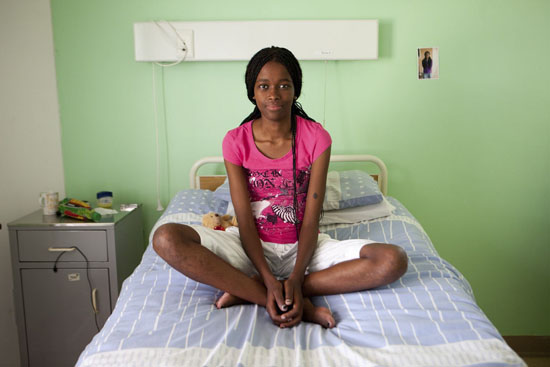
South Africa 2011 © Samantha Reinders
Phumeza is undergoing treatment for drug-resistant tuberculosis in South Africa. She had to endure an agonising wait before her TB could be correctly diagnosed. A new test is now available that could have diagnosed her condition much more quickly. Money from a financial transaction tax could help fund this kind of medical innovation and others in the future.
“There are funding gaps across global health that could be plugged with money from a financial transaction tax. It’s time to invest in real lives—real futures.”
—Sharonann Lynch, HIV/AIDS Policy Advisor, MSF Access Campaign
Donor support to fight diseases that hit the poor hardest has been waning for a while, but the announcement by the Global Fund to Fight AIDS, Tuberculosis, and Malaria in November that it was cancelling its annual funding round because donors had not paid up was nonetheless a shock.
Countries will now have to wait until 2014—at the earliest—before they can receive new funds to put more people on treatment for HIV or drug-resistant TB, or roll out diagnostic tests for malaria, for example. The Fund has put a stop-gap solution in place that can prevent treatment interruptions in the meantime , but it’s one that leaves countries hanging on the thinnest of lifelines.
A decade of progress fighting these three big killer diseases is now at risk. This retreat also comes at a time when there is a window of opportunity, capitalizing on recent advances, to save lives and ensure a healthy future for communities in developing countries. With HIV, for example, new evidence shows treatment itself could turn around the AIDS epidemic by slowing the spread of the virus; and new advances show that safer and more effective treatment for severe forms of malaria could save hundreds of thousands of children’s lives each year.
Given this scientific promise, now is not the time to scale down ambitions and accept that access to treatment will be rationed. Donors must now urgently step up and replenish the Global Fund so that its life-saving work can continue without interruption.
And while regular funding commitments must continue to be honored, there is also an urgent need for new and sustainable streams of revenue that can make up the gap. Even if donor countries made good on promises, it would still take more to meet the health needs in developing countries and support medical innovation.
One possible option is a small tax on financial transactions, such as the one being proposed in the European Union—dedicating a portion to global health could have a crucial impact on the health and lives of people in developing countries. The impact would be even greater if such a tax were supported by the G20 group of nations.
Related: Five Lives: How a Financial Transaction Tax Could Support Global Health
4. Numbers of Patients on Treatment for Drug-Resistant TB Remains Catastrophically Low

Armenia 2010 © Bruno De Cock/MSF
Vazgen Hakobyan underwent treatment for drug-resistant TB with MSF in Yerevan, Armenia. He says he continued his treatment for the sake of his grandchildren.
“There’s no hiding from the fact that treating people with drug-resistant TB is a long, difficult and complex process. But it can be done—people who get treatment are cured and can go on with their lives once more—but it needs a firm political and financial commitment.”
—Dr. Frauke Jochims, MSF TB Medical Advisor
Governments are not meeting the challenge of providing treatment for the rising numbers of people infected with drug-resistant tuberculosis (DR-TB), which has infected around five million people over the past ten years.
DR-TB—which occurs when the TB bacterium becomes resistant to anti-TB drugs—can be cured in the majority of cases, but many people go undiagnosed and untreated because of the difficulties involved in getting a correct diagnosis, and the expensive and complex treatment.
In what many hope will prove to be a breakthrough development, a new diagnostic test has been rolled out this year—including by MSF in seven countries—that can drastically reduce the time it takes to diagnose DR-TB, from several weeks to under two hours. Although the test is very expensive and is not as simple a test as is ultimately needed, the fact that it’s now a lot easier to diagnose people should spur governments into putting many more on treatment.
This, in turn, may help break the vicious circle with DR-TB drugs. With few people on treatment, low demand means drug companies don’t invest in expanding production. And without economies of scale and competition, drug prices remain high, with treatment costing on average US$4,500 per patient—several hundred times more than the $19 treatment course for standard TB. It’s not surprising the numbers on treatment have so far stayed low.
In fact, over the last ten years, less than 1 percent of people with DR-TB have had access to appropriate treatment and 1.5 million have died.
MSF has doubled the numbers of patients on treatment over the last decade, but the recent funding cuts announced by the Global Fund to Fight AIDS, Tuberculosis, and Malaria have cast a shadow of uncertainty over expanding treatment in many countries affected by the disease.
Related: DR-TB Drugs Under the Microscope
5. Turning the Screws on Affordable Medicines Produced in India
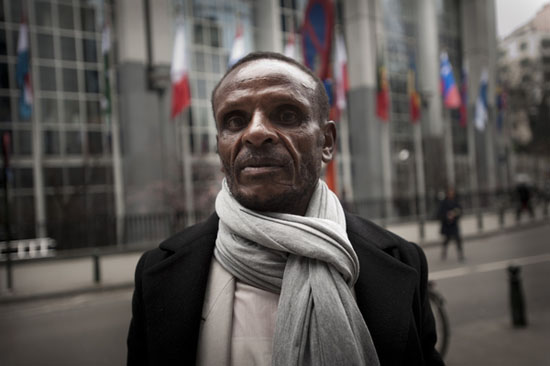
Belgium 2010 © Bruno de Cock/MSF
Jimmy Gideyi is a Kenyan activist living with HIV/AIDS who travelled to Europe to explain to the European Parliament how harmful provisions in trade agreements could stop the flow of affordable generic medicines that he and many others depend on to stay alive.
“Now the EU wants to send us back to a time when we helplessly watched friends and families struggle with ill health and death, because some big company and its government decided to put profits before people.”
—Loon Gangte, Delhi Network of Positive People (DNP+)
India’s role as the “pharmacy of the developing world” is once more under fire this year from both governments and multinational drug companies.
Five years after the drug company Novartis first tried to get a critical part of India’s pro-health patent law thrown out, the company is back for the final round of its legal battle against the Indian government—this time in the Supreme Court.
If Novartis is successful, India will be forced to grant far more patents on medicines than they currently do, blocking the production of more affordable versions of medicines patented elsewhere, and so keeping newer drugs out of reach of those who need them the most.
At the same time, the European Union continues its push for much tougher intellectual property rules in its negotiations with India over the terms of a bilateral trade deal.
One of the damaging clauses still on the negotiating table allows companies to sue the government if they feel their investment is coming under threat. Such a clause could have a harmful impact as companies could stop governments from taking steps to protect public health. For example, the tobacco company, Philip Morris, is making use of this provision in trade deals to sue Uruguay and Australia for introducing plain packaging laws banning all branding on cigarette packets as part of their public health campaigns against smoking.
And the European Union is not alone in its pursuit of tougher IP measures. Other wealthy countries are right now continuing to bully developing countries into accepting harsh provisions in free trade agreements; these include the negotiations between countries in the European Free Trade Area and India, as well as US trade negotiations with several Asia-Pacific countries in the Trans-Pacific Partnership agreement.
Related: Europe! Hands Off Our Medicine
6. An Experimental Scheme to Subsidize Malaria Treatment Gets Off to a Shaky Start
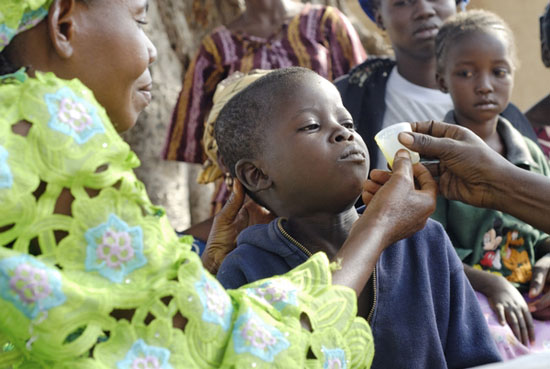
Mali 2009 © Barbara Sigge/MSF
Kanda Konde is five years old and getting his first dose of malaria treatment in the village Deguela, in the Kangaba region of southern Mali.
“It’s good to get ACTs out there, but we mustn’t neglect the need to get a confirmed diagnosis in the rush to lower prices for the medicines"
— Dr. Martin De Smet, MSF Malaria Working Group
Cost is the main reason why many people in Africa aren’t buying a more effective treatment now available for malaria. But a scheme set up to address the issue doesn’t seem to be delivering all the right results.
The World Health Organization first stated that medicines based on artemisinin—ACTs—should be used to treat malaria back in 2001, after studies showed widespread resistance had developed to the older drugs, such as choloroquine.
However, the newer recommended drugs are considerably more expensive. Public hospitals and clinics throughout Africa now provide the medicines, but these services are not accessible enough everywhere. Many people therefore buy their medicines themselves, often resorting to the cheaper, older drugs that are no longer effective.
So the aim of the Affordable Medicines Facility-malaria (AMFm), was to subsidize the prices of ACTs in the private sector where many people get their medicines: in shops and private pharmacies.
The pilot scheme was launched across eight African countries and initial surveys show that the price of ACTs has come down significantly as a result.
But the launch ushered in a new set of problems: a rush on orders for the subsidized medicines—in some countries, for amounts far exceeding needs—triggered a three-fold rise in the price of the raw materials for the medicines, as people feared they would run out. No shortages have materialized, but the prices of the final products, the drugs, have increased.
A further concern is that because the AMFm is targeting mainly private shops, people are buying and using ACTs without first getting a test to confirm that they have malaria. This means ACTs are being used unnecessarily which can lead to the malarial parasite developing resistance to the drugs. It also puts the patients’ health at risk because, without a correct diagnosis, they are taking medicines that may not treat the illness they are actually suffering from.
There have definitely been some wobbly first steps for this experiment and it won’t be clear for a while whether the AMFm will reach people in the poorest and most remote regions—or indeed if it will have an overall positive health impact.
7. Drug Shortages Threaten Moves to Expand Treatment for Chagas Disease
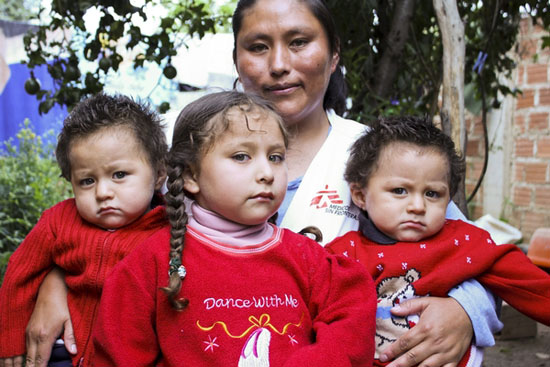
Bolivia 2011 © Vania Alves/MSF
Miriam Quispe Brito works as a nurse with MSF in Bolivia. She started Chagas treatment while she was pregnant in 2002, so as not to infect her child.
“In this area of Boquerón, with one of the highest rates of Chagas in Paraguay, we are being forced to slow down the rate at which we test people for the disease because we simply don’t have the drugs to treat them.”
—Dr. Henry Rodríguez, MSF Head of Mission in Bolivia and Paraguay, October 2011
New treatment programs for Chagas are being put on hold because of shortages of benznidazole, the main drug used to treat this neglected parasitic disease.
The shortages have been caused, among other factors, by a lack of planning for new production by LAFEPE, Brazil’s state-owned laboratory where benznidazole is manufactured. As a result, MSF has been forced to suspend plans to expand treatment for Chagas in Bolivia, the country hardest-hit, and also had to slow down screening patients for the disease in Paraguay for a period.
Other treatment providers have also been hit by the shortage. Following an international outcry, the Brazilian Ministry of Health is now publically committed to speeding up the manufacture of the drug and other necessary regulatory steps, so that 3.2 million new tablets for adults will be made available by the end of this year.This amount of medication is sufficient to cover the treatment needs in 2012 for those who will be diagnosed with the disease next year and need to be put on treatment.
MSF is now calling for an early warning system to be put in place to prevent the situation from happening again.
Many countries in Latin America have just started to expand their Chagas treatment programs after new medical evidence showed the benefits of treatment with benznidazole for more patients.
On a positive note, a new child-adapted formulation of benznidazole, delivered by the Drugs for Neglected Diseases initiative and LAFEPE, has been registered in Brazil. Until now, caregivers, in the absence of child-adapted formulations, have had to roughly chop up adult tablets, before crushing them up and mixing with liquid so children could take the medicine. The new formulation should allow for more accurate dosing of children under two years of age.
Related: Briefing: The Shortage of Benznidazole Leaves Thousands of Chagas Patients Without Treatment
8. Stuck in The Middle: Drug Companies Push Up Prices for Patients in Middle-Income Countries
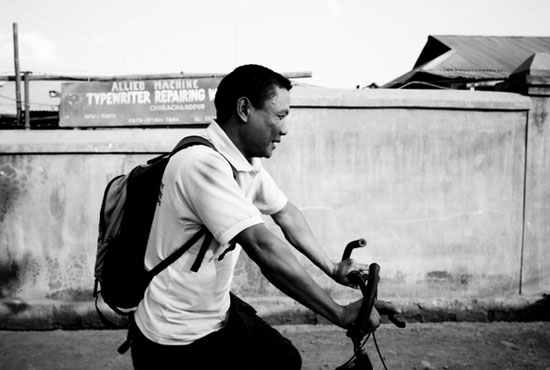
India 2009 © Sami Siva
Francis works as a health educator with MSF in Manipur, India. He is also HIV positive and married with a daughter. India is one of the middle-income countries targeted by drug companies as an emerging new market to exploit.
“We handed over many treatment programs in Latin America and Asia to local authorities in the confidence that they would be able to provide people with the treatment they needed to stay alive. Higher drug prices will create real funding challenges for some middle-income countries.”
—Dr. Tido von Schoen-Angerer, Executive Director, MSF Access Campaign
People living with HIV in middle-income countries like India, Brazil or Thailand are facing huge hikes in the costs of AIDS medicines—at a time when the pharmaceutical industry sees these countries as potentially lucrative markets for high-priced drugs, and “blockbuster” drugs go off-patent in wealthy countries.
This year, a number of drug companies confirmed an ongoing trend by refusing to extend standardized price discounts to middle-income countries—something which was previously routine practice. ViiV, Merck, Johnson & Johnson, and Abbott all now specifically exclude middle-income countries from standardized price discounts for some or all of their drugs. Countries are thus forced to negotiate on a case-by-case basis, which is likely to lead to higher prices.
This move ignores the fact that the majority of people in middle-income countries can’t afford to pay high prices for medicines.To add to the problem, these countries are now losing the support from global health mechanisms like the Global Fund.
The price of a WHO-recommended first-line HIV regimen has fallen, thanks to competition among producers, to around US$150 a year. But where patents stand in the way and countries cannot access the more affordable generic products, middle-income countries are left paying—at best—around $1000. Newer treatment options like raltegravir, darunavir, or etravirine cost several times more.
People in many middle-income countries are also cut out from the benefits of the Medicines Patent Pool’s first license agreement with a drug company, Gilead, signed in July. Though the license will allow generic manufacturers to boost production of more affordable versions of Gilead’s HIV medicines for some, in countries like Ukraine, China, Thailand, and Indonesia people will not receive these more affordable versions as a result of the deal.
Voluntary methods to ensure medicines are priced affordably, like the Patent Pool, do have a role to play when patents stand in the way of price-busting generic competition. But drug companies must ensure that their licenses open up access to affordable medicines for all developing countries.
Related: Untangling the Web of Antiretroviral Price Reductions: 14th Edition
9. Too many Children Suffering From Malnutrition Go Unnoticed Outside Emergency Hot Spots
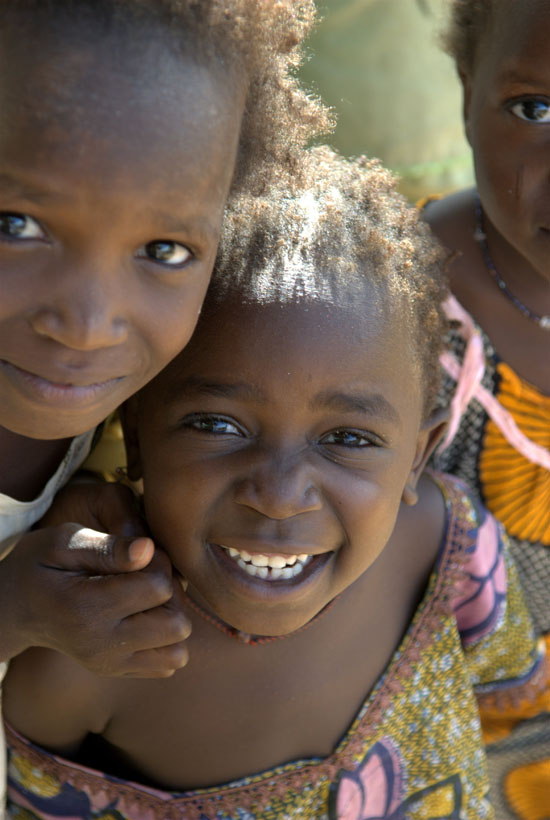
Niger 2010 © Yann Libessart/MSF
In Niger, MSF has pioneered feeding young children with supplementary, nutrient-dense foods to protect them from malnutrition.
“No child should have to reach the brink of death before getting access to the nutrition they need to grow and thrive.”
—Dr. Susan Shepherd, former MSF Nutrition Advisor
Each year, malnutrition claims millions of children’s lives—but this year, the world’s attention was drawn to the dramatic numbers of children suffering from malnutrition as the refugee crisis in the Horn of Africa unfolded. Thousands of Somali families fled their homes for refugee camps in neighboring countries, triggering a massive aid operation to provide them with emergency food aid.
For several years, MSF has been treating children who are routinely made vulnerable to malnutrition with food supplements containing all the essential nutrients a child needs to grow, in order to protect them from becoming malnourished. Access to animal-source protein for children under two is critical to their growth and development.
But this work has been exceptional, and, in general, the food distributed to young children as a part of routine food aid doesn’t contain the right amounts of minerals, vitamins, and proteins that allow a child to stay healthy and develop normally.
The emergency response to the Horn of Africa crisis shows the quality of nutritional programs in emergency situations is at least improving: the food aid provided in the refugee camps did contain the nutrient-dense foods adapted to children’s nutritional needs.
However emergencies—while attention-grabbing—are only part of a much larger story of on-going childhood malnutrition that occurs outside the media spotlight in areas like South Asia and Africa.
Providing nutritious food to young children is the cornerstone of every attempt to fight malnutrition in both rich and developing countries. In 2010, MSF witnessed a reduction by half in the mortality among children in Niger who received nutrient-dense foods as part of supplementary feeding programs. Niger has undertaken large-scale distributions of supplementary foods for children under two at risk of malnutrition in both 2010 and 2011.
Improvements in the way we tackle childhood malnutrition are clearly underway, but more efforts are needed to ensure that nutritious food reaches all vulnerable young children wherever they live, and not just those in emergency hot spots.
Related: Childhood Malnutrition: What Happens Now?
10. First-Ever Guidelines Released for Treating Cryptococcal Meningitis, a Major Killer of People With HIV, But Access Challenges Remain
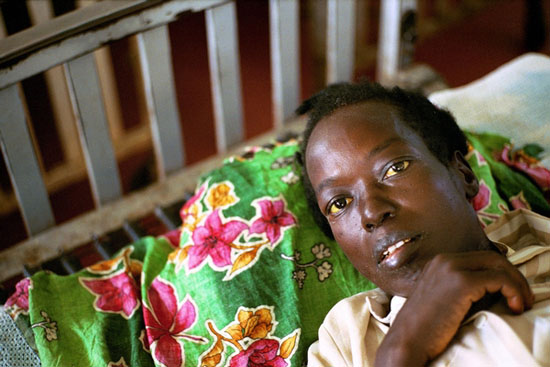
Kenya 2003 © David Levene
In this women’s ward in Homa Bay District hospital in Western Kenya, patients are treated for cryptoccoal meningitis.
“To address HIV/AIDS properly depends also on being able to prevent, diagnose, treat, and cure the opportunistic infections that are ultimately causing the AIDS deaths.”
—Dr. Daniel O’Brien, MSF HIV/AIDS Advisor
For the first time ever, the World Health Organization (WHO) in December released treatment guidelines for an HIV/AIDS “opportunistic infection”: cryptococcal meningitis (CM). MSF has seen in its programs that the disease is one of the leading causes of death in people living with HIV.
Cryptococcal meningitis is a fungal infection of the membranes covering the brain and spinal cord, and is a swift killer: if undiagnosed and untreated, people may die within a month.
But two of the drugs WHO recommends to treat the disease, amphotericin B and flucytosine, are very hard for patients in developing countries to come by. A third drug, fluconazole, is largely available, but has proven not as effective.
Flucytosine, for example, is not registered in any country in sub-Saharan Africa, where most cases of CM occur. Amphotericin B, too, is not registered in many African countries.
Even in South Africa, where amphotericin B is available in central health facilities, the drug is rarely available in rural district hospitals. In rural KwaZulu Natal, for example, only 35 percent of patients on treatment for the disease received any amphotericin B, with only 8 percent receiving what is considered an optimal two-week treatment course.
One key reason the drug is not widely available in the country is because it can cause side effects in the kidneys, and so is used mainly in central hospitals where patients can be closely monitored.
There’s an improved version of this medicine that carries fewer side effects for patients, but the huge price tag on liposomal amphotericin B puts this better-tolerated treatment currently out of reach. In South Africa, for example, it is only available in the private sector, and at a cost of US$2,430 for a treatment course.
While it is definitely good news that there are finally clear guidelines for how to diagnose and treat this major killer of people living with HIV/AIDS, it is critical that the drugs needed to treat the disease are both available and affordable for all the people who need them.

